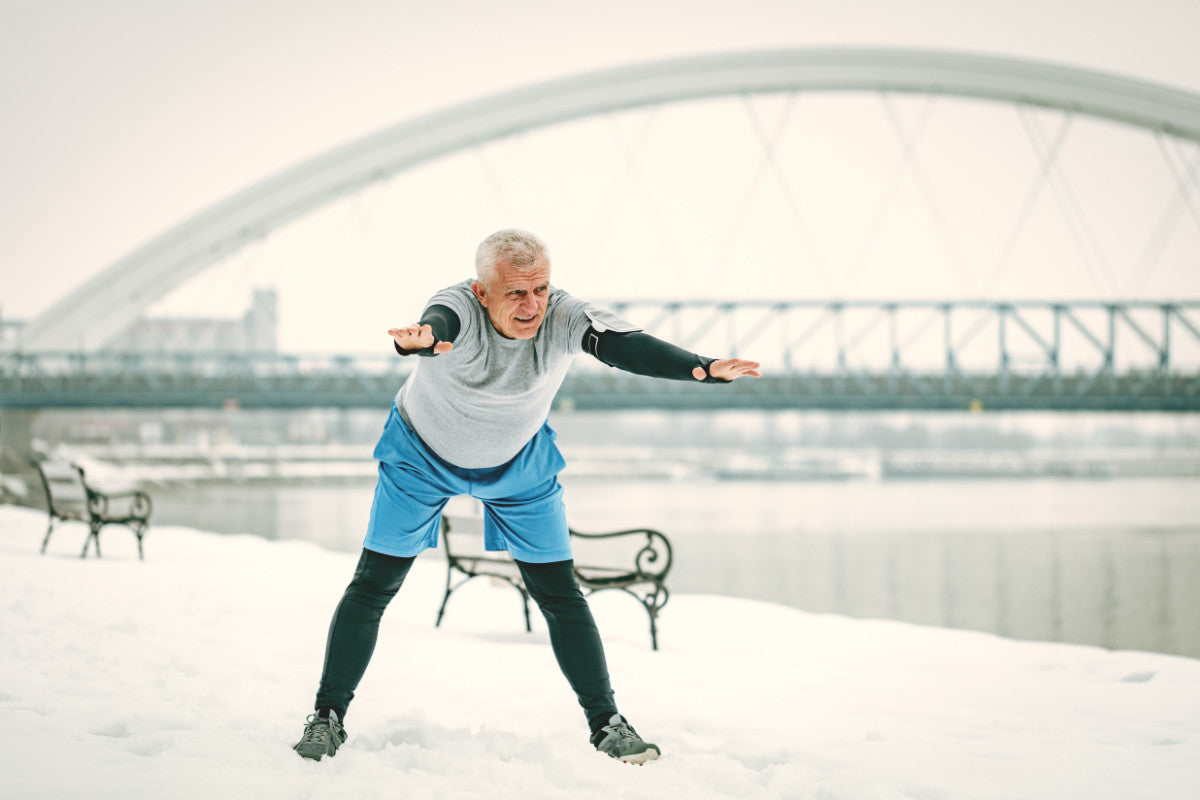Your Cart is Empty
FREE SHIPPING OVER $45 & RETURNLESS REFUNDS

Is it safe to exercise outside in freezing temperatures with sciatica? During the warmer months, I love being outside—whether it’s golfing, walking the dog, or just soaking up some fresh air. But as winter hits Alaska, and temperatures drop to freezing levels, I can’t help but wonder—does outdoor exercise help or hurt?
This is a question I recently received from one of our amazing customers, Tom B. And I really want to help answer it, especially with the cold weather we’re experiencing right now! Staying active is so important, and I’m here to share some tips and insights to make sure you can enjoy the fresh air safely.
A few winters ago, I was still trying to stay active during those chilly months. I’d bundle up and head out, but more often than not, I’d return home feeling tighter and more uncomfortable than when I started. Over time, I’ve learned a few things that make exercising outside during freezing temperatures much more manageable.
Yes, if you really want to enjoy the fresh air. But, there are a few things you need to do to make sure you stay safe and comfortable.
1. Layer Up 🧤
We’re not talking about just throwing on a sweater—layering properly is crucial. Start with moisture-wicking base layers, add an insulating layer, and finish with a windproof outer layer. Keeping your muscles warm helps protect against flare-ups by reducing muscle stiffness and ensuring proper blood flow, which can help alleviate sciatica discomfort.
2. Warm-Up Beforehand 🔥
Take a few extra minutes to get your body moving before heading outdoors. Dynamic stretches and mobility exercises can help loosen those muscles and prepare them for the cold. A proper warm-up reduces the risk of tightened muscles compressing nerves, reducing sciatica symptoms.
3. Listen to Your Body ⏸️
Cold weather isn’t worth pushing through pain. If something doesn’t feel right—stop! Sciatica can worsen with prolonged exposure to the cold, so taking breaks or cutting the activity short is essential. Listening to your body helps prevent further irritation to the sciatic nerve.
4. Opt for Safer Activities
Choose low-impact exercises, like walking (on smooth, even surfaces) or enjoying a bit of birdwatching. These are great ways to stay active while minimizing risk.
A word of caution: I remember one year I slipped on some ice while out for a walk—luckily it wasn’t a bad fall, but it easily could have been. Since then, I always make sure to walk with someone for added support and peace of mind. So if you’re someone who loves walking regularly, consider getting a walking buddy.
5. Stay Hydrated 💧
Drinking water helps maintain healthy muscle function and prevents dehydration, which can contribute to muscle stiffness and nerve irritation, making sciatica worse. Proper hydration supports nerve health and reduces flare-up severity.
So yes, even in the cold, your body still needs hydration! And remember to keep those breaks coming if you’re outside for extended periods. Keeping your muscles warm with a hot pack or taking regular breaks indoors can help manage sciatica symptoms.
Exercising outdoors in freezing temperatures is possible, but only if you take the proper precautions. I get it—you want to enjoy the fresh air! Just make sure you’re layering up, warming up, and listening to your body.
Mark